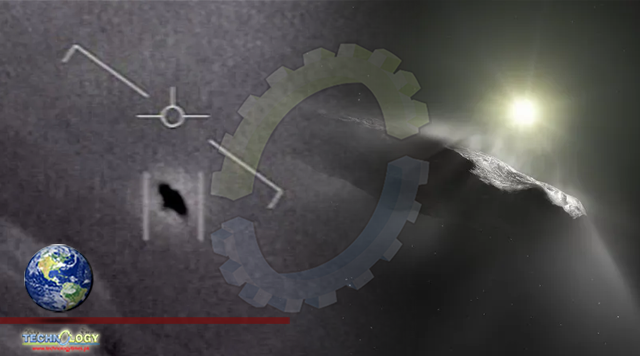To that end, a newly launched SETI initiative, called the Galileo Project, has announced its goal of searching for signs of extraterrestrial technological signatures, but instead of hunting for alien radio signals or messages encoded in laser light.

By George Dvorsky
A new project seeks to uncover evidence of aliens, not by gazing upon distant star systems but by finding traces of their technologies inside our solar system — and even on Earth.
The search for extraterrestrial intelligence, or SETI, began in the 1960s, but scientists have yet to find ironclad proof of its existence. The Fox Mulders of the world may argue to the contrary, but UFO sightings, also known as Unidentified Aerial Phenomena (UAPs) sightings, aren’t sufficient evidence for scientists to declare the existence of alien civilizations. A Pentagon report delivered to Congress on June 25 said as much:
The limited amount of high-quality reporting on unidentified aerial phenomena (UAP) hampers our ability to draw firm conclusions about the nature or intent of UAP.
Still, the search for aliens goes on, as it represents one of the most profound — if not the most profound — unanswered questions in science.
To that end, a newly launched SETI initiative, called the Galileo Project, has announced its goal of searching for signs of extraterrestrial technological signatures, but instead of hunting for alien radio signals or messages encoded in laser light, as other projects have done, these researchers will be searching for physical objects located nearby. These objects could take the form of a passing probe, a small object in orbit around Earth, or — to the delight of you Fox Mulders out there — UAPs.
Astronomer Avi Loeb from Harvard University is the co-founder and head of the Galileo Project, named in honour of the unfairly maligned 17th-century Italian astronomer.
You may already be familiar with Avi Loeb, as he has made many headlines for controversially suggesting that interstellar object ‘Oumuamua, which briefly passed through our solar system in 2017, was an alien probe. In addition to being an exotic visitor from afar, ‘Oumuamua exhibited a strange cigar-like shape and appeared to accelerate without the assistance of gravity, leading Loeb to infer the presence of alien technology.
Other scientists have disagreed with this claim, providing plausible explanations for how ‘Oumuamua got its odd shape and why it moved the way it did, but Loeb was, in my opinion, right to make his assertion.
The Milky Way galaxy has likely hosted a plethora of alien civilizations over the course of its long history, and while many of those lifeforms may now be gone, any probes they dispatched could still be wandering aimlessly through the cosmos. Heck, even our puny human civilisation has launched five (yes, five!) interstellar or soon-to-be-interstellar probes: Voyager 1 and 2, Pioneer 10 and 11, and New Horizons.
Accordingly, it’s not unreasonable to suggest that our galaxy is littered with interstellar probes, both primitive and advanced. ‘Oumuamua is probably not an alien spacecraft, but as the Galileo Project team argues on its homepage, “science should not dogmatically reject potential extraterrestrial explanations because of social stigma or cultural preferences.”
That alien aircraft tease fighter jets on occasion or that toaster-sized alien satellites are spying on us from Earth orbit are more radical assertions, but again, the team is not wrong to consider the possibility of extraterrestrial provenance.
Activities planned for the Galileo Project include searches for ‘Oumuamua-like interstellar objects, UAPs, and alien satellites in orbit around Earth. The team will look for interstellar objects by studying existing and future astronomical surveys (including observations made by the upcoming Vera C. Rubin Observatory) and hunt down possible UAPs with a network of mid-sized, high-resolution telescopes, detector arrays, and cameras.
Artificial intelligence will be used to distinguish natural or human-made phenomena — things like birds, aerial drones, and F-22 Raptor fighter jets — with actual alien gizmos.
When it comes to searching for and studying UAPs, the team will “not seek data from government-owned sensors that were not designed for this purpose, but instead collect our own state-of-the-art scientific data in a reproducible fashion,” as Loeb wrote in an essay he shared with me. “Most of the sky above us is not classified.”
Future telescopes, including the Vera Rubin Observatory, should be able to detect 0.91 m-wide objects in Earth orbit. The trick, of course, will be in validating candidate objects as being truly extraterrestrial in nature.
As Space.com reports, the project has already received $US1.755 million in donations, and the team is currently holding weekly meetings and considering which instruments to purchase.
Frank Laukien, president and CEO of Bruker Corp., a Massachusetts-based science equipment manufacturing company, is the other co-founder of the Galileo Project.
Should no alien tech be detected, the project will still collect valuable scientific data that could be used to study interstellar asteroids and comets and reveal new atmospheric phenomena, among other things.
I really like this project, as it fills an important gap in the search for alien civilizations. As the team admits, this “ground-based project is complementary to traditional SETI.” That said, it’s important to not get ahead of the evidence and jump to conclusions.
When you want to find aliens badly enough, it’s easy to see human-made and natural phenomena as evidence of them. Patient data collection may not be as headline-grabbing as a grainy video taken from a fighter jet, but it’s more likely to yield the answers we’re looking for.
Originally published at Gizmodo